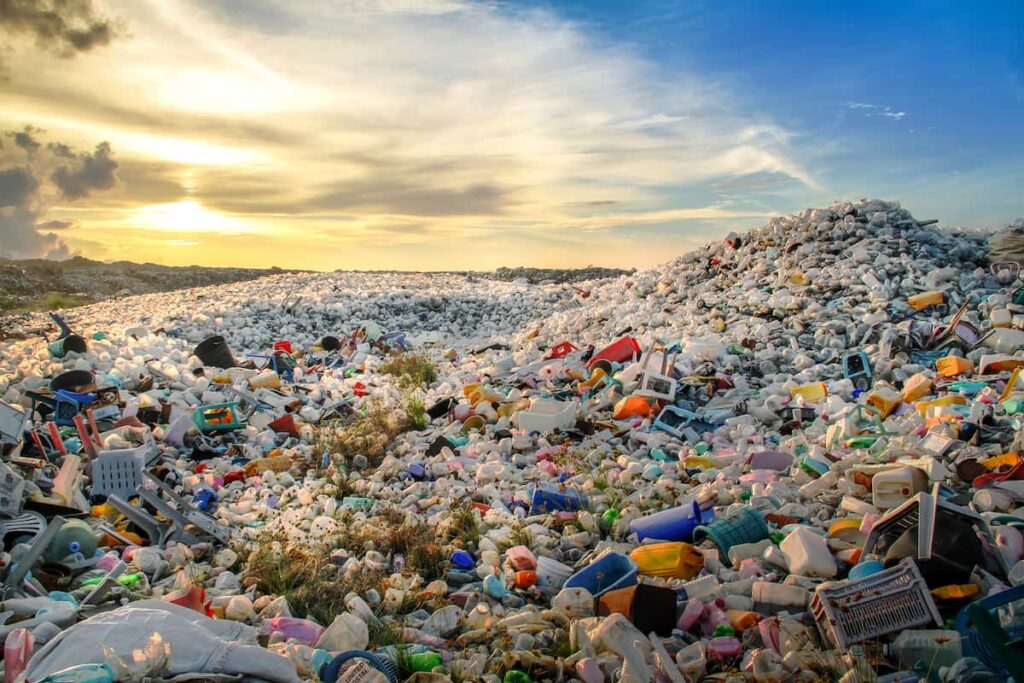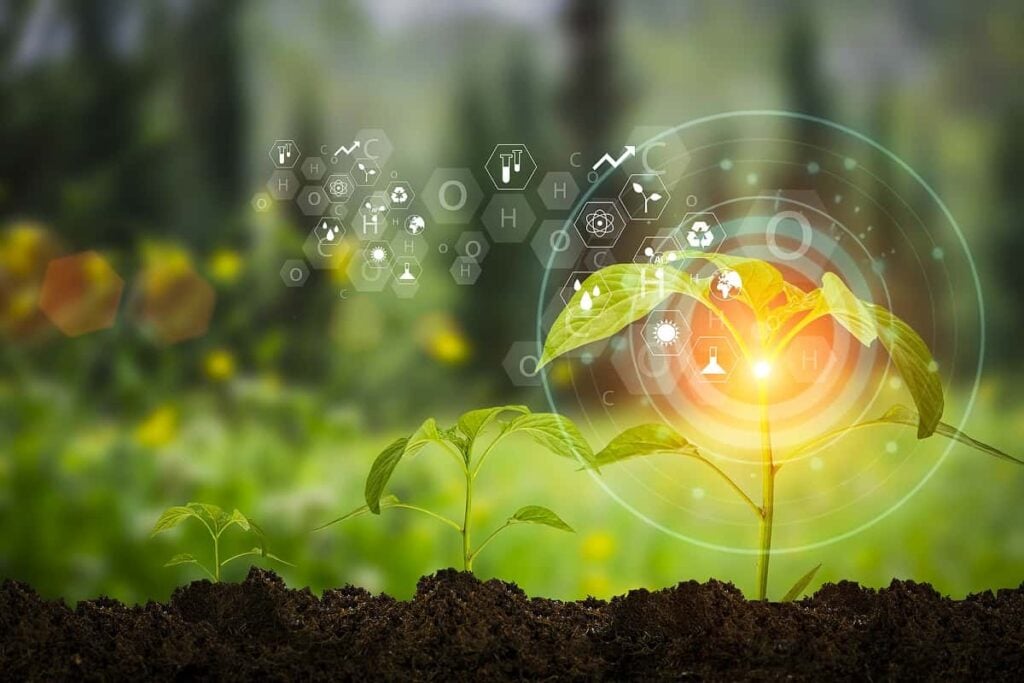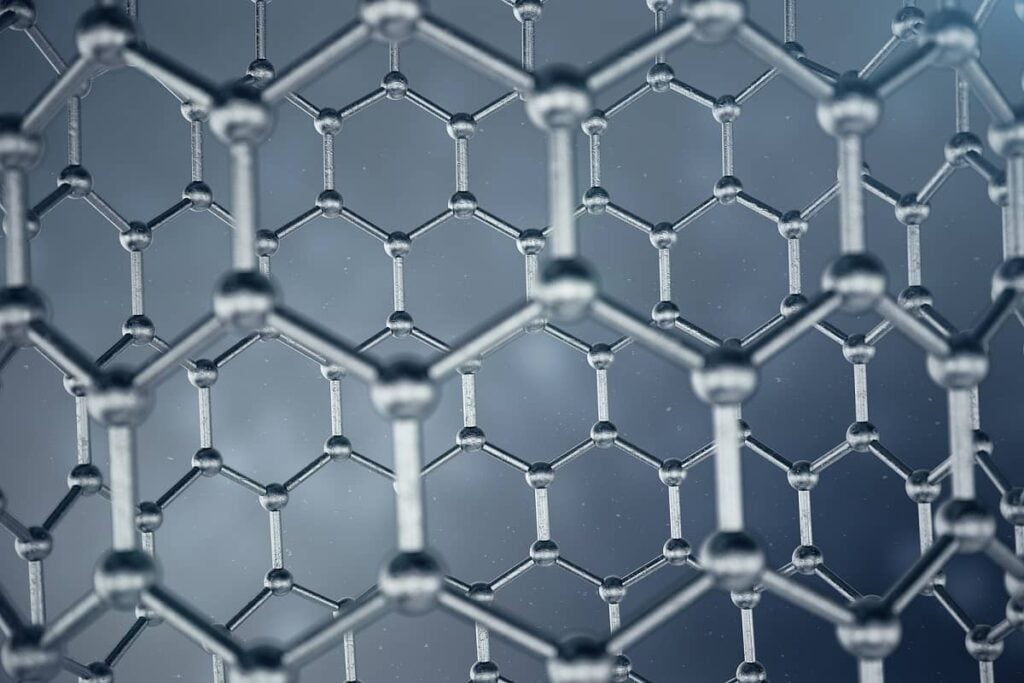3 Words: Recyclable Thermoset Plastics
Table of contents

Back in October 2016, we listed 30 emerging technologies we believe you should know about. One of those technologies we identified was recyclable thermoset plastics. Our first thought was, aren’t all plastics recyclable? As it turns out, they’re not.
Our image of plastics are wrappers, plastic cups, PET bottles, cars, computers, medical equipment, dashboards, electrical equipment, and more. We can also see large heaps of motherboards, discarded plastic parts of factories, equipment, circuit boards, etc. Plastics have not only supported a large industry but also drove a consumption for plastic that reached 297.5 million tons in 2015. This led to plastic waste turning up in oceans in a volume equivalent to 8 million metric tons a year. Here’s a part of the Maldives you’re not going to see as you’re being whisked away to that $1000 a night all-inclusive:

You will read a lot of literature classifying plastics into seven sub-groups. Well, these sub-groups were really created so that industry and consumers have a way of sorting all those plastic out either to be recycled or disposed of. When it boils down to key compounds and physical characteristics, plastics are really divided into just two major categories: Thermosetting and Thermoplastics.
Thermosetting or Thermoset Plastics (Cannot Recycle)
This is the kind of plastic where the plastic ingredient, once shaped and cooled, cannot return to its original form. Thermoset plastics are the kind we use to make parts for aircraft, cars, tires, computer casings, medical equipment, etc. Once thermoset plastics are heated then cooled, they will maintain shape and will be durable even under extreme pressure and heat. For all its versatility, the very thing that makes thermoset plastics useful is what makes it so difficult to dispose or to recycle.
Because you cannot break it down to its original form, you cannot re-use it to create new thermoset plastic. You have to use new raw ingredients and start the molding process with fresh ingredients. The discarded thermoset plastics will obviously end up in a landfill somewhere and form heaps of waste in time like all landfills always do. This is why developing a thermoset plastic that can be recycled is so important.
Thermoplastics (Can Recycle)
The plastic less rigid and softens to return to its original form is called thermoplastic. This is the kind of plastic that can be extruded and molded to whatever shape or form you want. You can produce films, packaging, Styrofoam, PET bottles, and PVC pipes from thermoplastics.
There’s been a lot of research put into making discarded thermoset or thermosetting plastics recyclable. The rationale for all these efforts is the protection of the environment and the sustainable management of all those thermoset plastics that will end up in landfills (or in the ocean). Conventional recycling for thermoset plastic-like mechanical and thermal processes cannot break it down. Needless to say, a solution to the above challenges is significant to an already thriving industry of thermoset plastic and plastic additives manufacturing.
Assume for a moment that the main ingredient for thermoset plastic is an uncut diamond. Diamond once cut into its desired shape or form can no longer be uncut to its original shape and size. To attempt to re-shape it will alter its value and purpose. What if you found a way to uncut it? Not only can you uncut it, but you found a way to take it apart molecule by molecule and then put it together again to form a different shape and size. While you are at it, you made the diamond stronger than before. And, you found a chemical key to bind, unbind, and make the diamond even stronger anytime and anyway you want.
A team of researchers at the IBM Almaden Research Center inadvertently stumbled upon this very key and created two new thermosetting polymers. One of the polymers, poly(hexahydrotriazine) or PHT was even made more durable through the introduction of carbon nanotubes. Not only have the IBM research group synthesized two new thermosetting plastics, they inadvertently discovered a gel to make damaged plastic heal itself. They referred to it as “elastic organogel”.
This translates into two opportunities:
- Creating a new generation of raw materials that can be useful over and over again without altering the stability of molecules of the material. This makes for a truly sustainable supply of raw material.
- A new plastic product that heals itself. A product that can literally withstand physical damage and if actually damaged, can repair itself.
These opportunities can mean a lot of things for an industry expected to grow at a compounded rate of 3.7% annually until 2020 in the Asia-Pacific. Thermosetting plastic production globally is estimated to be around 34.99 million tons in 2015 and, by 2020, anticipated to hit 41.96 million tons. Unfortunately, there are no start-ups we can see as channels for investment into these new technologies. Your options will have to be through the companies who invested in the research and will most likely have the greatest success rolling the technology out to produce mainstream products for the plastic additives industry. This technological discovery is particularly significant for IBM because of the large amount of thermoset plastics found in computer hardware and other devices.
International Business Machines or IBM (NYSE:IBM) filed patent applications in 2014 for:
- The process for synthesizing the two new thermosetting plastics;
- The technology that takes the thermosetting apart, puts it together and makes it stronger; and
- The self-healing elastic organogel.
As it turns out, Baker Hughes Incorporated (NYSE:BHI) apparently was into the same research with this patent application but, only for a process to synthesize a thermosetting plastic identical to one of IBM’s without the introduction of carbon nanotubes during synthesis. The patent application was filed in 2015 and is driven by their existing investment into polymers as additives to the plastic industry.
The anticipated increase in demand, driven by the introduction of carbon nanotubes in reinforcing the strength of PHT, can also be significant to companies like Nanocyl, a Belgian company manufacturing carbon nanotubes and its German distribution partner Velox already serving the global market for plastic additives.
Conclusion
So, when can we expect to see recyclable thermoset plastics? We don’t know but we can be sure about two things. First, that when this does become economically viable enough to commercialize, a huge deal is going to be made out of it, and rightfully so. Second, if it does utilize carbon nanotubes, then investing in carbon nanotube manufacturers like Nanocyl is going to make a whole lot of sense.
Sign up to our newsletter to get more of our great research delivered straight to your inbox!
Nanalyze Weekly includes useful insights written by our team of underpaid MBAs, research on new disruptive technology stocks flying under the radar, and summaries of our recent research. Always 100% free.















then thermoset plastic can not be modify by chemist, physic ; radiation x ray etc?